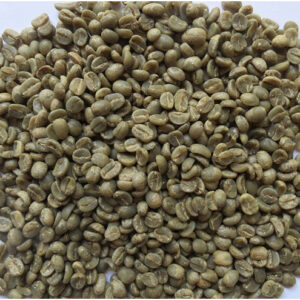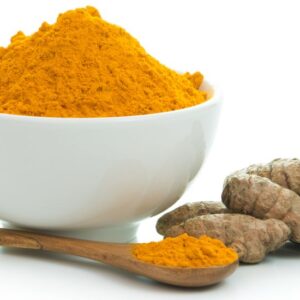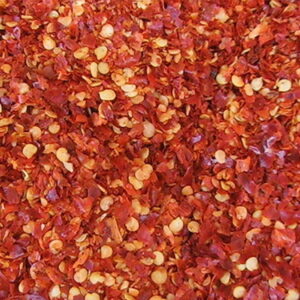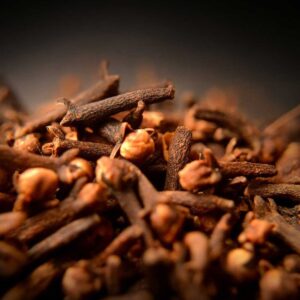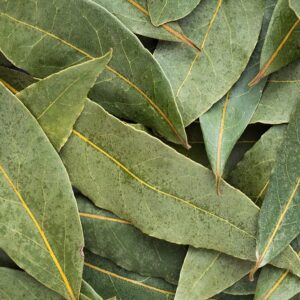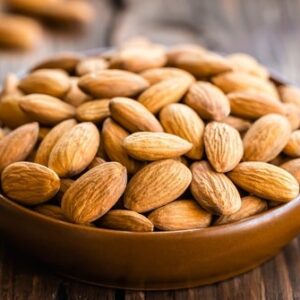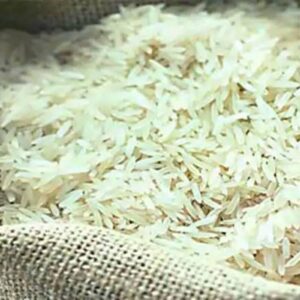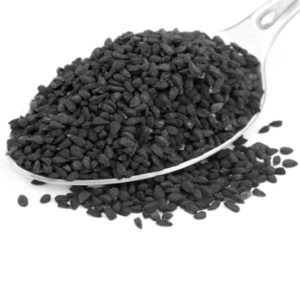-
turmeric-powder
Turmeric Powder is one of the key ingredients in cooking. The turmeric (haldi) is finely ground and blends in your recipes to give your dishes flavour & a warm golden yellow hue. It has been formulated without any added preservatives or added colours. Add to your delicious food recipes and rustle up some tasty dishes without worrying about your health. Turmeric powder has several medical benefits as per Ayurveda – some of them are: a natural healing agent for cuts and bruises. Alongside, it helps in quick recovery from cough, cold and sore throat.
-
RED CHILLY WHOLE AND GROUND
WE OFFER DRY RED CHILLY AS PER BUYERS REQUIREMENT MOISTURE AND AFLATOXIN CONTROLLED AS PER USA AND EU NORMS
varieties
- CRUSHED
- POWDER
- WHOLE WITH STEM AND WITHOUT STEM
PACKING IN 25/50 KG JUTE BAGS
-
CURRY POWDER
Curry powder is a mixture of spices that take on a yellow hue. Contrary to popular belief, it is not a staple ingredient in Indian cooking. Curry powder was created by the British to evoke the essence of Indian food and is not used in authentic Indian cooking. The confusion may come from a popular Indian dish known as “curry,” but that term refers not to the spice blend but to the dish itself, which is made up of a sauce or gravy along with meat and vegetables. The spice blend most often used in an Indian curry is garam masala.
One of the main ingredients in curry powder is turmeric. Other spices that can be incorporated include everything from ginger, cinnamon, garlic, and cloves to mustard seed, black pepper, and fennel seed.
-
ONION POWDER
Fundamental to so many cuisines onions and garlic are veritable powerhouses of flavour. Both are pungent when chopped and add a rich depth of flavour to savoury dishes and produce mouth-watering pickles and chutneys. White and brown onions are widely available as are shallots for a milder sweeter taste. Onions have long been venerated indeed they were particularly important in Ancient Egypt where their concentric rings were said to symbolize eternal life. Garlic too has an equally long history and is full of health benefits as well as flavour boosts. It is not called the stinking rose for no reason as it releases its wonderfully distinctive aroma when handled. Varieties fall within the categories of hard necked soft necked or wet. Pure white is the most popular variety and satisfy the high demand for this ingredient in the U.A.E. and other contery
-
CLOVES
whole organic Cloves (Laving) fresh stock.best before 6 months
Cloves are an incredibly common type of spices that are broadly used for cooking and other purposes. It is used to create oil, as an antiseptic and even for other medicinal purposes.
no chemicals presticides Artificial Colors and Preservatives
it gives natural aroma -
BAY LEAF
ay leaf (Laurus nobilis) medicinal herb refers to the aromatic leaf of the Bay Laurel tree and it is native to Asia Minor, Egypt. It is also found in parts of India. It is from the Lauraceae family and it is also called Sweet bay. This medicinal plant has been used since ancient Greece as herbal remedy and it is primarily used for its distinctive flavor and fragrance as a culinary herb.
The common names are Indian Bay, Bay Laurel, Sweet bay, Laurus nobilis, Laurel tree, True laurel, Laurel, Grecian laurel and Nobel Laurel.
It is often used to flavour soups, stews, Moroccan-style dishes, and in Mediterranean cuisine. The leaves do not develop their full flavour until several weeks after picking and drying and it is highly favoured by many chefs. It can be found as an ingredient in numerous recipes inclusive of French recipes.
-
Garlic powder
Garlic powder is a spice that is derived from dehydrated garlic and used in cooking for flavour enhancement. The process of making garlic powder includes drying and dehydrating the vegetable, then powdering it through machinery or home-based appliances depending on the scale of production.
-
almond kernel
WE HAVE ALMONDS IN SHELL AND WITHOUT SHELL FROM BEST PACKERS OF CALIFORNIA WHICH IS SHIPPED ON REGULAR BASIS TO CATER TO INDIAN MARKET.
Almond is a source of many nutrients which help in development of the brain. Almond induces high intellectual level and has been considered as an essential food item for growing children. Regular consumption of almonds helps to increase the level of high density lipoproteins (HDL) and reduce the level of low density lipoproteins (LDL), thereby effectively controlling cholesterol levels.
-
basmati rice
1121 SELLA , GOLDEN SELLA, SUGANDHA, 1509 SELLA, SHARBATI RICE.
Basmati rice is a variety of long-grained rice that originates in the foothills of the Himalayas and is traditionally served in Indian and other South Asian cuisines. Frequently served alongside various curries, braised or roasted meats, or as the main ingredient in classic biryani, basmati rice is sometimes served plain but often flavored with turmeric or saffron, both of which impart a characteristic yellow hue.
Its distinctive nutty flavor and unique, slightly floral aroma is similar to that of jasmine rice, which is commonly used in Thai and other Southeast Asian cooking. When cooked, basmati has a slightly softer grain than jasmine rice, while jasmine has a nuttier flavor.
-
BAY LEAF
ay leaf (Laurus nobilis) medicinal herb refers to the aromatic leaf of the Bay Laurel tree and it is native to Asia Minor, Egypt. It is also found in parts of India. It is from the Lauraceae family and it is also called Sweet bay. This medicinal plant has been used since ancient Greece as herbal remedy and it is primarily used for its distinctive flavor and fragrance as a culinary herb.
The common names are Indian Bay, Bay Laurel, Sweet bay, Laurus nobilis, Laurel tree, True laurel, Laurel, Grecian laurel and Nobel Laurel.
It is often used to flavour soups, stews, Moroccan-style dishes, and in Mediterranean cuisine. The leaves do not develop their full flavour until several weeks after picking and drying and it is highly favoured by many chefs. It can be found as an ingredient in numerous recipes inclusive of French recipes.
-
BLACK CUMIN SEEDS
Black seed (Nigella sativa) is a flowering plant native to Asia and the Mediterranean. Its seed has been used to make medicine for thousands of years.
Black seed might have effects in the body that help boost the immune system, fight cancer, prevent pregnancy, reduce swelling, and lessen allergic reactions by acting as an antihistamine.
People commonly use black seed for asthma, hay fever, diabetes, high blood pressure, eczema, weight loss, menstrual cramps, and many other conditions, but there is no good scientific evidence to support many of these uses. There is also no good evidence to support using black seed for COVID-19.
- Featured
-
-
turmeric-powder
Turmeric Powder is one of the key ingredients in cooking. The turmeric (haldi) is finely ground and blends in your recipes to give your dishes flavour & a warm golden yellow hue. It has been formulated without any added preservatives or added colours. Add to your delicious food recipes and rustle up some tasty dishes without worrying about your health. Turmeric powder has several medical benefits as per Ayurveda – some of them are: a natural healing agent for cuts and bruises. Alongside, it helps in quick recovery from cough, cold and sore throat.
-
RED CHILLY WHOLE AND GROUND
WE OFFER DRY RED CHILLY AS PER BUYERS REQUIREMENT MOISTURE AND AFLATOXIN CONTROLLED AS PER USA AND EU NORMS
varieties
- CRUSHED
- POWDER
- WHOLE WITH STEM AND WITHOUT STEM
PACKING IN 25/50 KG JUTE BAGS
-
CURRY POWDER
Curry powder is a mixture of spices that take on a yellow hue. Contrary to popular belief, it is not a staple ingredient in Indian cooking. Curry powder was created by the British to evoke the essence of Indian food and is not used in authentic Indian cooking. The confusion may come from a popular Indian dish known as “curry,” but that term refers not to the spice blend but to the dish itself, which is made up of a sauce or gravy along with meat and vegetables. The spice blend most often used in an Indian curry is garam masala.
One of the main ingredients in curry powder is turmeric. Other spices that can be incorporated include everything from ginger, cinnamon, garlic, and cloves to mustard seed, black pepper, and fennel seed.
- Most Popular
-
-
ONION POWDER
Fundamental to so many cuisines onions and garlic are veritable powerhouses of flavour. Both are pungent when chopped and add a rich depth of flavour to savoury dishes and produce mouth-watering pickles and chutneys. White and brown onions are widely available as are shallots for a milder sweeter taste. Onions have long been venerated indeed they were particularly important in Ancient Egypt where their concentric rings were said to symbolize eternal life. Garlic too has an equally long history and is full of health benefits as well as flavour boosts. It is not called the stinking rose for no reason as it releases its wonderfully distinctive aroma when handled. Varieties fall within the categories of hard necked soft necked or wet. Pure white is the most popular variety and satisfy the high demand for this ingredient in the U.A.E. and other contery
-
CLOVES
whole organic Cloves (Laving) fresh stock.best before 6 months
Cloves are an incredibly common type of spices that are broadly used for cooking and other purposes. It is used to create oil, as an antiseptic and even for other medicinal purposes.
no chemicals presticides Artificial Colors and Preservatives
it gives natural aroma -
BAY LEAF
ay leaf (Laurus nobilis) medicinal herb refers to the aromatic leaf of the Bay Laurel tree and it is native to Asia Minor, Egypt. It is also found in parts of India. It is from the Lauraceae family and it is also called Sweet bay. This medicinal plant has been used since ancient Greece as herbal remedy and it is primarily used for its distinctive flavor and fragrance as a culinary herb.
The common names are Indian Bay, Bay Laurel, Sweet bay, Laurus nobilis, Laurel tree, True laurel, Laurel, Grecian laurel and Nobel Laurel.
It is often used to flavour soups, stews, Moroccan-style dishes, and in Mediterranean cuisine. The leaves do not develop their full flavour until several weeks after picking and drying and it is highly favoured by many chefs. It can be found as an ingredient in numerous recipes inclusive of French recipes.
-
Garlic powder
Garlic powder is a spice that is derived from dehydrated garlic and used in cooking for flavour enhancement. The process of making garlic powder includes drying and dehydrating the vegetable, then powdering it through machinery or home-based appliances depending on the scale of production.
-
- New Products
-
-
almond kernel
WE HAVE ALMONDS IN SHELL AND WITHOUT SHELL FROM BEST PACKERS OF CALIFORNIA WHICH IS SHIPPED ON REGULAR BASIS TO CATER TO INDIAN MARKET.
Almond is a source of many nutrients which help in development of the brain. Almond induces high intellectual level and has been considered as an essential food item for growing children. Regular consumption of almonds helps to increase the level of high density lipoproteins (HDL) and reduce the level of low density lipoproteins (LDL), thereby effectively controlling cholesterol levels.
-
basmati rice
1121 SELLA , GOLDEN SELLA, SUGANDHA, 1509 SELLA, SHARBATI RICE.
Basmati rice is a variety of long-grained rice that originates in the foothills of the Himalayas and is traditionally served in Indian and other South Asian cuisines. Frequently served alongside various curries, braised or roasted meats, or as the main ingredient in classic biryani, basmati rice is sometimes served plain but often flavored with turmeric or saffron, both of which impart a characteristic yellow hue.
Its distinctive nutty flavor and unique, slightly floral aroma is similar to that of jasmine rice, which is commonly used in Thai and other Southeast Asian cooking. When cooked, basmati has a slightly softer grain than jasmine rice, while jasmine has a nuttier flavor.
-
BAY LEAF
ay leaf (Laurus nobilis) medicinal herb refers to the aromatic leaf of the Bay Laurel tree and it is native to Asia Minor, Egypt. It is also found in parts of India. It is from the Lauraceae family and it is also called Sweet bay. This medicinal plant has been used since ancient Greece as herbal remedy and it is primarily used for its distinctive flavor and fragrance as a culinary herb.
The common names are Indian Bay, Bay Laurel, Sweet bay, Laurus nobilis, Laurel tree, True laurel, Laurel, Grecian laurel and Nobel Laurel.
It is often used to flavour soups, stews, Moroccan-style dishes, and in Mediterranean cuisine. The leaves do not develop their full flavour until several weeks after picking and drying and it is highly favoured by many chefs. It can be found as an ingredient in numerous recipes inclusive of French recipes.
-
BLACK CUMIN SEEDS
Black seed (Nigella sativa) is a flowering plant native to Asia and the Mediterranean. Its seed has been used to make medicine for thousands of years.
Black seed might have effects in the body that help boost the immune system, fight cancer, prevent pregnancy, reduce swelling, and lessen allergic reactions by acting as an antihistamine.
People commonly use black seed for asthma, hay fever, diabetes, high blood pressure, eczema, weight loss, menstrual cramps, and many other conditions, but there is no good scientific evidence to support many of these uses. There is also no good evidence to support using black seed for COVID-19.
-
27
Jan
27
Jan
27
Jan
